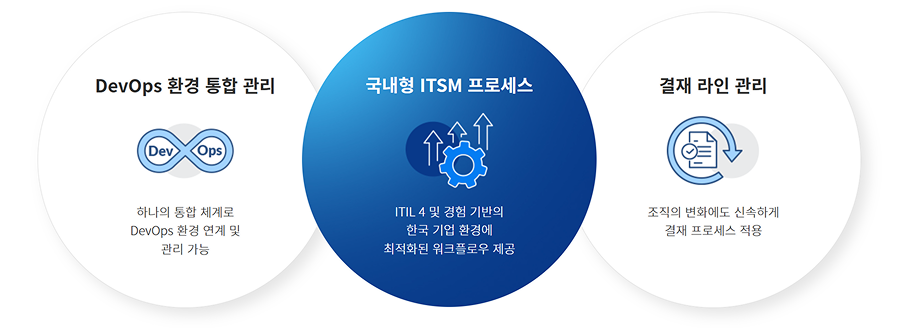
As digital transformation accelerates, many companies are considering whether to reorganize their ITSM (IT Service Management) systems or expand them into ESM (Enterprise Service Management). However, the concepts of ITSM and ESM remain confusing, and it is not easy to determine which option is better for our organization.
In this content, based on the latest trends in the IT industry, we will examine the differences between ITSM and ESM, considerations for their adoption, and how actual enterprises are establishing practical transition strategies.
💫ITSM vs ESM: What’s the Difference?
Organizational service management systems are rapidly evolving in the wake of digital transformation. While ITSM has long served as the core framework for IT department operations, ESM, which expands this approach to the entire enterprise, is gaining attention in recent years.
According to Business Research Insights’ 2024 report, the ESM market is expected to grow from approximately $12 billion in 2024 to about $28 billion by 2032, with a projected compound annual growth rate (CAGR) of around 11.5%.
At first glance, ITSM and ESM may appear similar; however, they show clear differences in terms of actual application scope, purpose, and adoption requirements. Below is a brief comparison of the main differences.
|
Category
|
ITSM
|
ESM
|
|
Target
|
Service management focused on IT
|
Expanded to all departments (HR, Admin, etc.)
|
|
Purpose
|
IT service efficiency and quality
|
Standardization and collaboration across the organization
|
|
Core Framework
|
ITIL, ISO/IEC 20000, etc.
|
Expansion of ITSM principles
|
|
Adoption Requirement
|
Establishment of IT operations
|
Preparation of cross-departmental collaboration and process systems
|
💫Is ESM the Right Answer for Every Organization?
ESM is gaining attention as a strategy that fits the era of digital transformation, and many companies are actually considering its adoption with the goal of enterprise-wide collaboration and standardization of work processes. However, ESM is not necessary for every organization. While ESM is certainly an attractive approach that can be expected to improve efficiency and strengthen collaboration, it is essential to carefully examine the current situation of the organization before implementation.
• What if the ITSM system itself is not yet stable in the organization?
⇒ Premature expansion can rather cause confusion.
• What if the volume of service requests is not large, or the boundaries between departments are clear?
⇒ Enhancing the existing ITSM alone can yield sufficient results.
💫What is a practical approach? Start with ITSM enhancement
ESM is not a universal solution. The important thing is not to follow trends, but to establish a strategy based on the organization’s digital maturity and internal needs. ESM is not the “right answer for everyone,” but rather a direction that should be carefully designed according to each company’s situation. Experts advise that the most realistic approach is to first stabilize the organization’s ITSM foundation, and then consider gradual expansion to ESM only where necessary.
• Redesign ITSM with a focus on business operations
• Expand integration with DevOps and automation tools
• Consider gradual expansion to ESM
• Prioritize user experience in service request and knowledge management
💫ISTM Solution Optimized for the Domestic Environment - Matilda

What should a solution that enables a strategic approach to ITSM look like?
PLATEER presents Matilda, an ITSM solution optimized for the domestic environment, for companies preparing to advance their ITSM. Matilda is composed around four core functions: workflow management, DevOps management, approval management, and an integrated dashboard. It is designed to reduce the complexity of IT service management and enable more efficient and systematic operations through automated processes. Additionally, it features ITIL-based workflows as well as various functions tailored to the actual work processes of business departments, reflecting the practical needs and realities of domestic companies.
Digital transformation strategy starts not with simple expansion, but with systematic foundation maintenance.
Before considering ESM, check how effectively your organization is operating ITSM!
If your organization is considering digital transformation and ITSM advancement, ➡️ [Explore Matilda]
Did you enjoy today’s content?
Subscribe to PLATEER’s newsletter!
Get curated insights and updates delivered straight to your inbox.

Subscribe to our newsletter